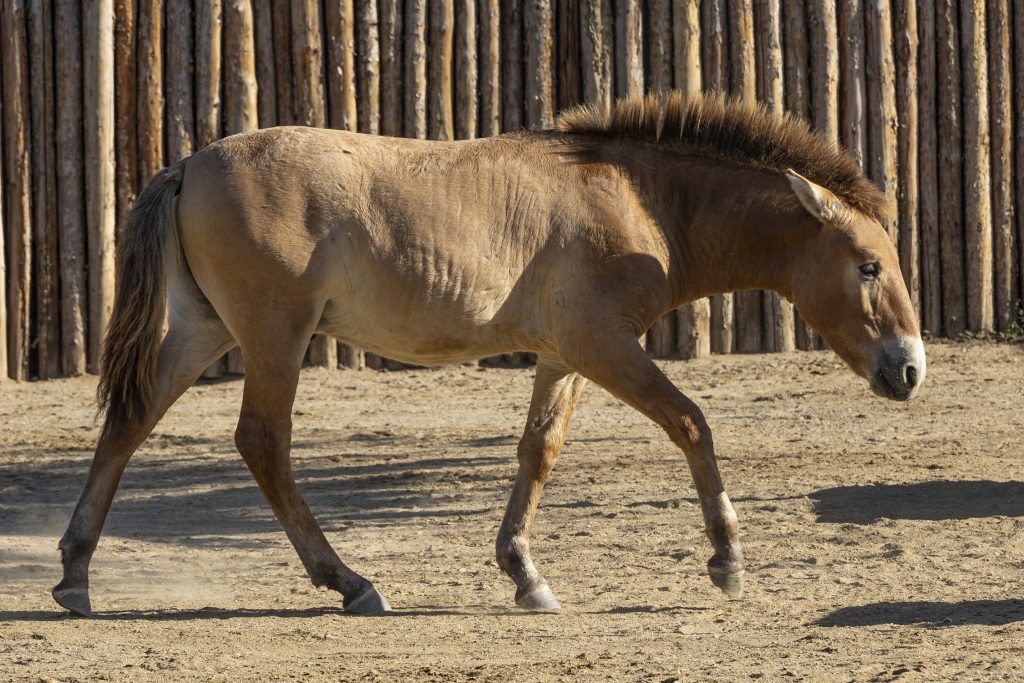
SAN DIEGO —The world’s second successfully cloned Przewalski’s horse is thriving at his home at the San Diego Zoo Safari Park. The foal, born Feb. 17, 2023, and his surrogate mother, a domestic quarter horse, were recently moved from his birthplace at ViaGen Pets & Equine cloning facility in Texas so he can learn the language of being a wild horse from his own species.
Upon his arrival, the foal was given the name “Ollie,” in honor of Oliver Ryder, Ph.D., Kleberg Endowed Director of Conservation Genetics at San Diego Zoo Wildlife Alliance. Dr. Ryder began his career at San Diego Zoo Wildlife Alliance in 1975, under the guidance of his mentor, Dr. Kurt Benirschke, who was instrumental in founding the conservation research program at San Diego Zoo Wildlife Alliance. Dr. Ryder oversees research activities in the areas of molecular genetics, genomic studies and genetic rescue efforts, including stem cell applications—all focused on reducing extinction risk and contributing to species recovery and sustainable populations.
“It is an honor to have studied and worked with so many others on the conservation of this special animal and to see come alive the possibility of using advanced genetic and reproductive technologies to sustain resilient populations in human care and in their native habitat,” said Ryder.
Known as takhi in their native Mongolia, the Przewalski’s horse is a symbol of resilience. Extensive efforts have been underway over the last one hundred years to first appreciate this noble horse, and then save it from extinction.
The births of Ollie and Kurt are a result of a partnership between nonprofit Revive & Restore, the animal cloning company ViaGen Pets & Equine, and San Diego Zoo Wildlife Alliance, to bring back genetic diversity to the endangered Przewalski’s horse species.
Formerly extinct in the wild, the Przewalski’s horse has survived for the past 40 years almost entirely in zoos around the world, and nearly all of the surviving horses are related to just 12 Przewalski’s horses born in native habitats. Ongoing reintroductions of Przewalski’s horses into their native habitats have established several herds in grasslands in China and Mongolia. To maintain genetic variation, however, scientists believe more work needs to be done to ensure the species’ future survival.
